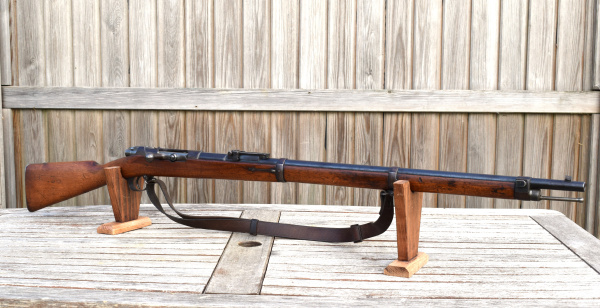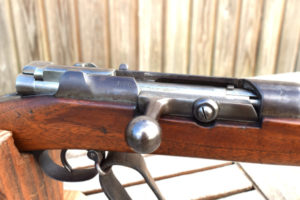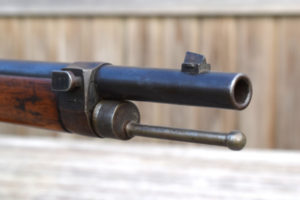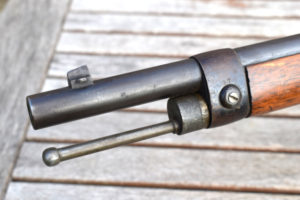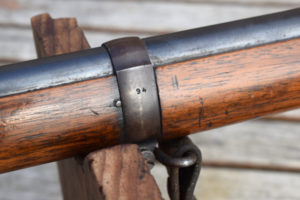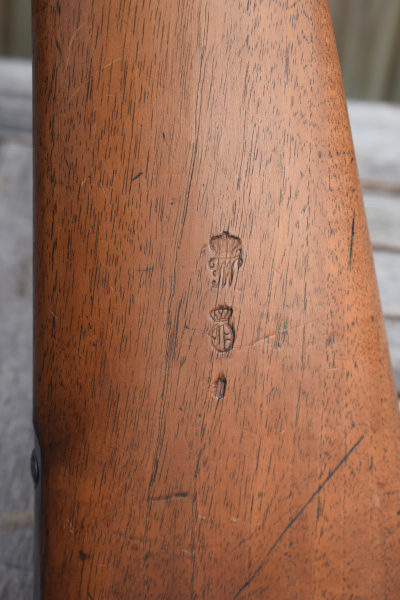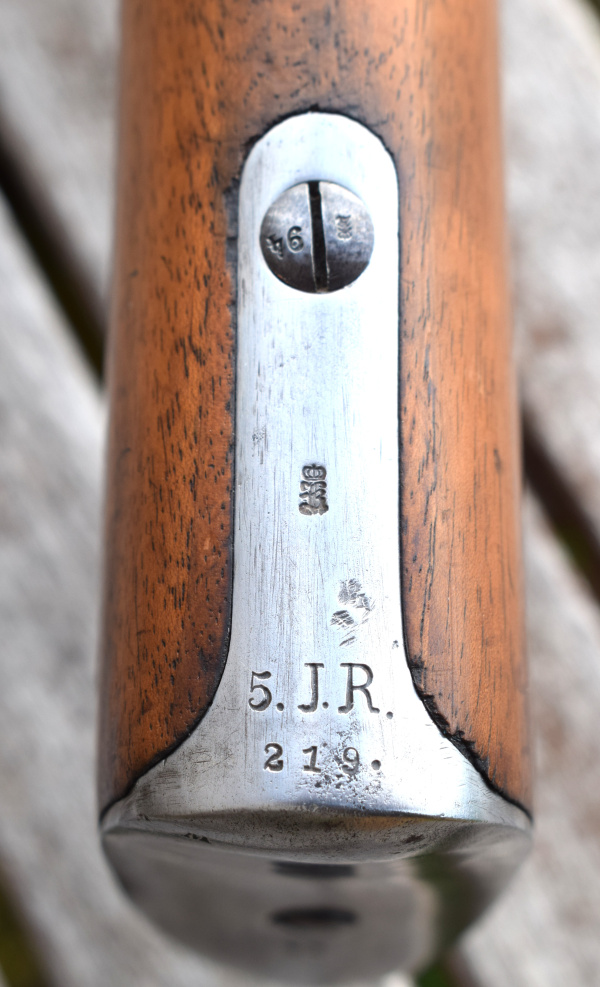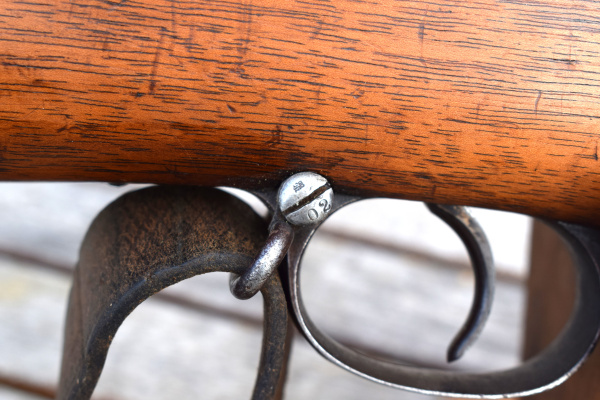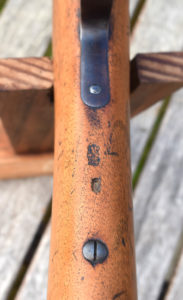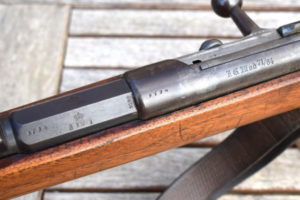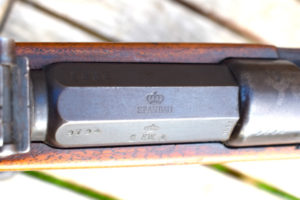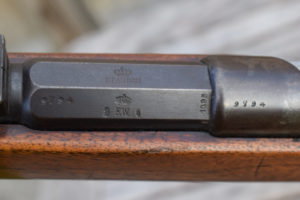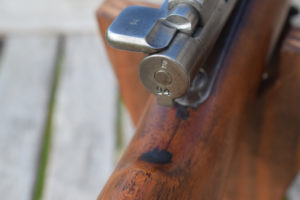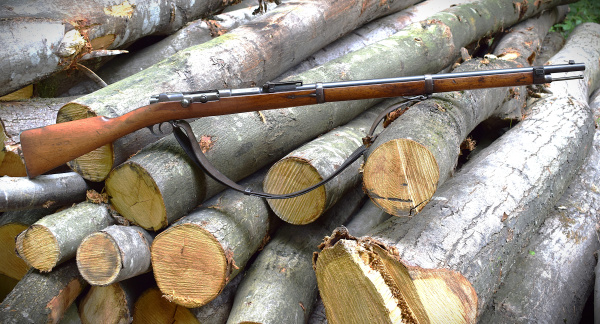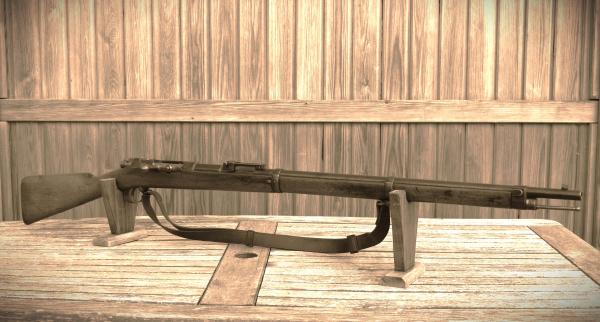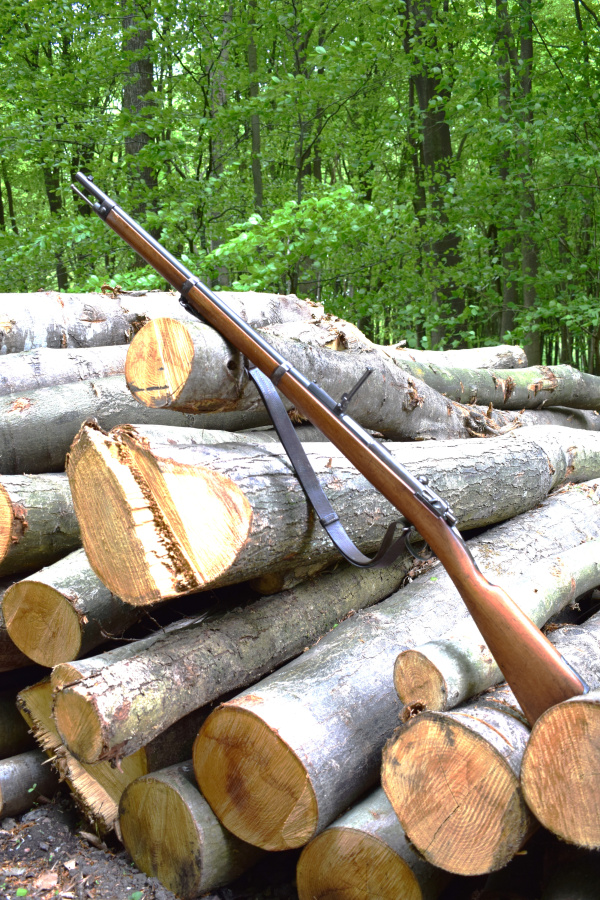Rare Spandau Mauser 71/84 Infantry Rifle with Jager connections 1888.
Created on May 12th 2025
Fine 71/84 Bolt Action Mauser by Spandau with a bona-fide Jager conection.
Originating from the Mauser 1871 single shot rifle, these rifles were a development which turned the earlier weapon into an eight shot repeater by the addition of a tubular magazine. The experienced soldier could even effectively make the rifle hold 10 rounds in total! Officially it was designed to take eight rounds. Other European powers had developed magazine arms and Germany hastily converted their single shot weapons into this Model, in an effort to keep up. However, by the time all the changes had past tests and development, it was 1886 before the first weapons emerged from the factories. This example was actually produced in 1888. While the Germans had been rushing to develop this monster repeater, the other military powers were now adopting the smaller 30′ calibre weapons with much better ballistics and smokeless powders. This had the effect of virtually making the 71/84 obsolete before it was issued. This is, to the modern-day weapons collectors, a bonus, as many of them saw very little use. The 71/84 was very soon replaced by the infamous “Commission 88”. This is the reason so many of these 71/84s’ turn up with such very fine bores, as does this one. This despite the fact that their propellant, black powder was highly corrosive and that many were converted to the new 8mm round.
In the authors’ opinion; one of the finest military arms ever produced. The quality of the workmanship and strength of the build coupled with the sheer engineering finesse is hard to match. You know when you have this arm in you hand – its weight is difficult to ignore but, along with that weight is the solid reliability; you know this weapon is going to produce results. Okay, the round is slow and fouls the bore very quickly but, you wouldn’t want to be on the receiving end of its firepower – it must have been like facing off a Dreadnought!
This rifle carries the serial number “9794” This is matching on all parts including the bolt, breech, barrel. The last two digits “94” appear on all the ancillary and small components right down to the screw heads, where it appears adjacent to an Imperial inspection stamp. Rather strangely there is one component which carries a different number; the front barrel band which shows “34”, however, even the cross pin with the drilling for the fixing screw has the correct number on it. Opps! just spotted another one; the sling swivel and its cross screw are marked “02”. These things can occur within the natural course of service life when repairs are made quickly to keep a rifle in use. Having said that with the weapons short lived history, I can not imagine any scinario where a numbered replacement part would be ordered from source to keep the weapon “correct”.
This rifle was made in the Spandau works of Prussia being marked so on the top flat of the hexagonal portion of the barrel, Behind the rear sight “SPANDAU” is clearly marked below the Imperial Crown. The initials for “F.W” (Friedrich Wilhelm) appear beneath an additional crown on the LHS 45 degree flat of the same. There are many Imperial inspection and acceptance stamps on the breech hexagonal form. The model designation “I.G. Mod. 71/84” which literally means “Infantry Rifle…..” is on the LHS of the action wall. As is the norm with German rifles of this era, all the components have a marking of some type and all match. The maker’s Arsenal location does not usually throw much importance into the mix with these rifles but, take note as the story developes !
The rifle measures an impressive 50.3/4″ in overall length. The round blued barrel is 31.5/8″ long. The Pull length to centre is 13″. Chambered in 11mm Mauser. (The caliber marking actually says “10.95” ) The rifle has a stacking hook under the muzzle, on a circular cap at the end of the magazine. The front band incorporates the bayonet lug. The mid band has the forward sling swivel fitted under. The smooth trigger is protected by a steel trigger guard which also acts as the anchor point for the rear sling swivel (currently !) The rear ladder sight is graduated from 400 to 1500 meters. Simple inverted “V” front sight on a block (even the foresight inverted V is numbered 94 !) The rifle is equipped with a sophisticated magazine cut-off system in the form of a catch mounted on the rear LHS of the action. When pushed forward the lever stops the feed ramp from functioning, when pulled to the rear, it allows the rifle to feed from the tube under the barrel. This is all in fine working order. There is a flag safety mounted on the rear of the straight armed bolt.
Single piece European Walnut stock with straight wrist in very good condition. Even colour and satin finish. No splits or cracks, very few unintended marks, some signs of a military life. There is one non-standard solitary screw with slotted head in position beneath the butt-stock – suspected additional sling swivel at some time ? Very clear and clean Imperial crowned inspection and acceptance stamps on the underside of the wrist and the RHS of the butt. Steel butt-plate with matching number. Most interestingly, on the crest of the curved plate tang are the issue unit markings. They read; “5. J.R. / 219” it is beleived to be The Royal Prussian Jägerbattalion von Neumann (1st Silesian) No.5 Rifle number 219. An Infantry rifle in a Jager Battalion ?
![[object Object]](https://upload.wikimedia.org/wikipedia/commons/thumb/d/d2/J%C3%A4gerpatrouille._Gem%C3%A4lde_von_Richard_Kn%C3%B6tel_um_1910.jpg/1076px-J%C3%A4gerpatrouille._Gem%C3%A4lde_von_Richard_Kn%C3%B6tel_um_1910.jpg)
Jägerpatrouille, painting by Richard Knötel (1910)
There’s only one problem with this idea and that the famous Jagerbuchse 71/84 Mauser, a similar but very different weapon ! Fiercely and proudly carried by the Jagers. So, why a full length Infantry Gewehr with Jager markings ? Has the but-plate been changed ? Apparently not, serial number and inspection marks are correct. Also, this makes one wonder about the single solitary screw in the stock, which occupies the exact position of the rear sling mount on the Jagerbuchse! 190 mm from the rear fixing screw on the trigger guard. If you consult German Military Rifles by Dieter Storz, you will find reference to a very rare issue which were adapted for Jager use by their own gunsmiths – this is one of those. This also explains the incorrectly numbered, trigger guard mounted, rear sling swivel. Numbers issued, compared to regular 71/84 ‘s vas very low ! Serious Mauser 71/84 collectors should take note.
The bore is in fantastic condition with clean, 4-groove RH twist rifling for its entire length. Bright, shiny, clean and sharp – actually enthusing to see them like this! Otherwise this rifle is in better condition than many other more modern rifles that I have examined. Mechanically the rifle is functioning correctly and can be CIP Nitro proofed if required. Condition is very good. External wear is very even and absolutely as expected for a weapon of this age. The rifle as a whole has settled within original blueing, to worn blueing and plum browns. Evidently, it has been cared for and not neglected. The stock is in fine condition considering its military life-span. No attempts at refinishing spotted on eith wood or metal work.
An interesting and very rare thing within this speciality.
No License Required – Section 58(ii)
£ 1850.
Comments Off on Rare Spandau Mauser 71/84 Infantry Rifle with Jager connections 1888.
